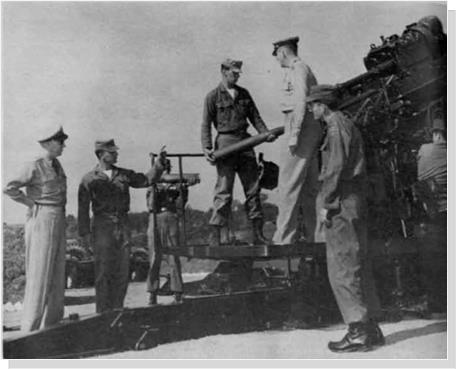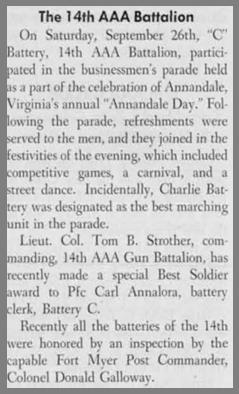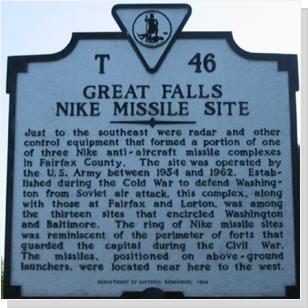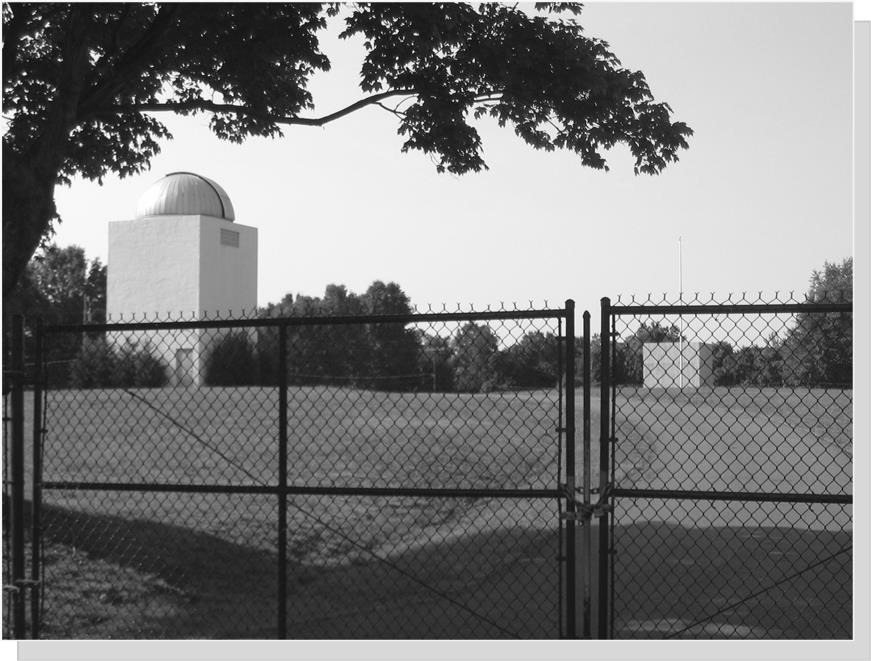
Army Antiaircraft Base 1951
Gallows Road in Annandale
By: M. Callahan with contributions by local resident Jim Cox
 Following the initial pattern of forts established for the defense of Washington during the American Civil War, Antiaircraft bases were established surrounding DC for the defense of the city during the Cold War.
Following the initial pattern of forts established for the defense of Washington during the American Civil War, Antiaircraft bases were established surrounding DC for the defense of the city during the Cold War.
Annandale folklore includes the story that a NIKE missile defense base was located in Annandale during the 1950’s. According to research, Project Nike was a U.S. Army project, proposed in May 1945 by Bell Laboratories. Bell had been charged to develop a line-of-sight anti-aircraft missile system. The project delivered the first US operational anti-aircraft missile system in 1953 known as the Nike Ajax. A great number of the technologies and rocket systems used for developing the Nike Ajax were re-used for other programs functions, many of which were given the Nike name (after Nike, the Greek goddess of victory). The missile's first-stage solid rocket booster became the basis for many types of rockets including the Nike Hercules missile and NASA's Nike Smoke rocket, used for upper-atmosphere research. (1)
The Annandale myth goes even further to suggest that there was a fire in a missile silo eluding to the image of an ICBM housed below ground and emerging as it is fired across continents. See how myths just grow and grow. There was never any question that this Annandale base did NOT house ICBM’S. As it turns out, it did NOT house NIKE Missiles either. NIKE Missiles have more the appearance of a rocket fired from a carriage than the intercontinental ballistic missile housed in silos but neither of them were in Annandale.
In fact, the Army base located along Gallows Road was an Antiaircraft Artillery Gun Site, listed as W-63, a precursor to the NIKE missile defense program in Northern Virginia. This base was in existence from 1951-1957 when the residential community of Broyhill Crest was largely completed. Obviously, an artillery base can not operate with shells raining over the homes of a large housing project. In the year before the base closed, the artillery sites were dismantled and munitions removed. In 1959, the property on which the actual base was situated was sold and developed into the housing community now present.
The base had always been closed to the public which may have spurred the speculation of what was housed within. In order to quell some of the gossip, the troops participated in the 1953 Annandale Parade winning the designation of the best marching unit in the parade.
Cold War AAA Defenses of Washington (1951 - 1958)
Several permanent sites were established for the Army's Anti-Aircraft Artillery (AAA) Gun Site Four 90mm AA guns and/or four 120mm AA guns were positioned at each site, with troop barracks and other support buildings. Known sites include:
Fort Belvoir (1951 - 1958) 120mm guns: at Gum Springs.
Fort Hunt (1951 - 1954) 120mm guns: on post.
Hybla Valley (1953 - 1958) 120mm guns, (1951 - 1953, 1957) 90mm guns: undetermined (W-51).
Franconia (1951 - 1954) 120mm guns: undetermined.
Annandale (1951 - 1957) 90mm guns: undetermined (W-63).
Vienna (1951 - 1957) 120mm guns: undetermined.
Hunting Ridge (1951 - 1954) 120mm guns, (1957) 90mm guns: undetermined.
Langley (1957 - 1958) 120mm guns, (1951 - 1957) 90mm guns: undetermined (W-72).
Fort Myer (1951 - 1958) 90mm guns (eight): on post (Washington Forest) (W-61).
NIKI Missile Sites: The NIKE Missile sites were the first nationwide U.S. air defense system designed to protect against a Soviet nuclear attack. In the 1950s, they were highly visible, powerful symbols of U.S. military power as well as a reminder of the Soviet threat. The sites were the outgrowth of an increasing concern over the Soviet ability to equip jet aircraft with nuclear bombs, and continued to develop into an early defense against Inter-Continental Ballistic Missiles (ICBMs).
During World War II, the U.S. military began to experiment with missiles and rockets in response to the German rocket program. In 1943, the U.S. Army established the Rocket Branch of the Ordnance Corps, and in 1945 recruited Bell Laboratories and the Douglas Aircraft Company as part of the team (USACE 1997:5; Bright 1997:321). Although Bell Laboratories and Douglas had completed a prototype weapon by 1946, funding cutbacks delayed further progress. In 1951, Western Electric, then the prime contractor of the project, had developed a 34-foot, two-stage missile guided by a system of three radars. The new missile could travel at Mach 2 (Bright1997:321).
This missile used a highly volatile liquid fuel composed of jet fuel and nitric acid, and had to be handled with full protective gear in specially constructed magazines. This was a revolutionary and complex technology for the time. The first radar would identify the target 125 miles away, the second would track the target, and a third would track the missile's course and alter it in response to the target tracking radar. All these activities were coordinated by computers. (Bright 1997:322).
In the early 1950s, antiaircraft defense consisted of conventional antiaircraft guns. Due to the increasing tensions between the U.S. and the Soviet Union and as a result of the Korean War, in1951 the Army endorsed a nationwide surface to air missile (SAM) defense system. Tensions became heightened in response to successful hydrogen bomb tests by both the Soviet Union and the United States in 1953. In that year, the Army created selection boards responsible for land acquisition and construction oversight (Bright 1997:323; USACE 1997:5-6).
By the summer of 1953, Douglas and Bell were producing missiles and equipment, and training soldiers to operate the new missile system that was christened NIKE after the Greek goddess of victory. Later it was given the name NIKE-Ajax.
Land acquisition became an onerous procedure. Conflict and condemnation proceedings were required in some areas but land acquisition in Fairfax County was not difficult. The Army was required to use government-owned land whenever possible. This probably made the decision to locate at least part of the site at the D.C. Department of Corrections in Lorton a simple one. In October 1953, the Army obtained the use of two parcels totaling 30 acres within the Lorton Prison complex. Due to the size of the tract acquired by the Army, the Lorton site was made a double site that had six rather than the standard three magazines, and twice the normal staff (Bright 1997:329).
Work at the Lorton site began in March 1954, and was complete enough to become the national showpiece for the Army's public unveiling of the nationwide NIKE program in 1955. Due to its proximity and size, it was labeled the National NIKE Site by the Secretary of the Army, and was host to visits by numerous foreign dignitaries as well as national and local politicians, and even local residents (Bright 1997:329-331). (2)
Shortly after the first NIKE sites were operational, President Dwight D. Eisenhower came to office with the promise to take a "New Look" at our foreign policy, and find ways to use America's growing technology to create more efficient, cost effective defensive systems. The outgrowth of this "New Look" policy was the decision to use nuclear warheads on anti-aircraft missiles that could destroy several attackers with one missile at lower cost. The new missiles, dubbed NIKE-Hercules, were in fact an entirely new missile that flew up to 100,000 feet (30,480 meters) and had a speed of Mach 3.5. The new missile’s range was twice that of the NIKE-Ajax, and the dangerous liquid fuel was replaced with a much safer solid propellant. The development of the new NIKE-Hercules was authorized in 1953, and it was ready for service by October of 1958 (Bright 1997:339).
For cost considerations, and because the NIKE system was so extensive, with over 3,000 launchers in service at its height, the Hercules was designed to fit into this NIKE-Ajax system. Lorton became the prototype site for the conversion to NIKE-Hercules. Although the same site was used for the new missiles, some alterations had to be made to accommodate the Hercules. Gas detection systems were added to detect leaks in the tritium gas detonation system, and the elevator motors and mechanisms that lifted the missiles to the surface needed to be upgraded to handle the heavier missile. Each magazine had to be spaced farther apart to prevent a rocket blast from damaging other weapons during a launch. Only about one-third of the sites were chosen for these new weapons. Neither the Fairfax/Popes Head Road site nor the Herndon site received Hercules missiles (Bright 1997:340).
Due to the increased security required with the presence of nuclear weapons, the Army added intrusion alarms, erected fences and guard houses, and assigned four-man military police detachments with German shepherd guard dogs. These security concerns also ended the open houses at Lorton and other installations that had once been so frequent. It is not known whether Hercules missiles at the Lorton site actually contained nuclear warheads or not, since the weapons could also carry conventional warheads, but some analysts suggest that they did after the U-2 incident in 1960 ( Bright 1997:341). Due to construction and operating costs of the new Hercules facilities, the army decided to cede operation of many of the Ajax sites to the National Guard. Beginning in 1958, the Virginia National Guard began training to take over the Fairfax site and the Ajax portion of the Lorton site. The Virginia National Guard consistently set records for performance in training exercises. By 1960, the Army closed the Ajax sites due to their prohibitive operating costs. Herndon was closed in 1961, and Fairfax in 1963. On August 30, 1963, the National Guard took control of Lorton, and only a small contingent of Army personnel continued to work at the site (Bright 1997:344; USACE 1997:7).
During the 1960s, the political and defense climate changed, necessitating a change in strategic defense operations. The Soviet Union began to increase their supply of ICBMs and decrease their dependence on long range bombers. Accordingly, the United States decided to focus on the construction of strategic nuclear weapons.
In 1973, Secretary of Defense James R. Schlesinger decided to close the Lorton site and all but four of the remaining Hercules sites in the United States. Starting in April of 1974, the battery was closed. Prior to its transfer to the General Services Administration in that year, the Department of Defense entered an agreement with GSA to remove the three radar towers and pad, and to spot weld and secure the missile launchers and storage shelters, as well as remove all "above ground obstacles" (USACE 1997:38).
As a result of the DOD remediation, most of the NIKE operations structures were razed (Bright 1997:345-346). At the time of its demise, the NIKE system was in its final phase, known as NIKE-Zeus. Although never activated, many of the systems developed for the Zeus were later used in anti-tactical ballistic missiles (ATBMs). NIKE technology was also used in ICBM projects, but none of these were ever deployed. In 1963, there were 164 active NIKE-Hercules batteries. By 1974, there were 52, and in 1975, only four remained. The last battery, at Fort Bliss, Texas was decommissioned in 1983.
NIKI Sites in Northern Virginia
Site designations and locations of the Virginia sites defending the nation's capital
(W-64) Lorton (double site) - 1954 - Sep 1958
District of Columbia minimum security prison
(W-74) Fairfax Pohick—1954 - Mar 1963
Quiet Brook Rd. off Popes Head Rd
(W-83) Herndon Dranesville—1954 - Nov 1962
Springvale Rd, S of VA 193/ Georgetown Pike
Turner Farm County Park
Lorton was the prototype underground missile battery with installation completed in September 1954. During the 1950s and early 1960s, the Lorton site served as the National Site so the battery was subjected to frequent VIP visits. Foreign dignitaries and military officials, politicians, school groups, and boy scouts often toured the missile site. The sites were manned initially by Regular Army units with Virginia Army National Guard units assuming responsibilities in later years.
Lorton became the lone operational site in the Virginia portion of the Washington Defense Area after 1963. This Nike Hercules battery remained active until 1974.
Photo top of page and news article clipping: Antiaircraft Journal, 631 Penn. Ave,
Washington, DC. @1953.US Antiaircraft Association. Vol. LXXXXVI No. 6, p. 32
(1) Wikipedia
(2) The information provided in the Historic Context of the Nike Missile Site was extracted from the Historic Structures Determination of Eligibility Report, Lorton Correctional Complex prepared for the GSA by Greenhorne & O’Mara, Inc. /requirements of the National Historic Preservation Act of 1966. Much of the information included was provided by Irma Clifton of the Lorton Heritage Society.
Reproduction of this story and photographs, in part or in whole, requires the written permission of the author. Copyright © 2011 Annandale Chamber of Commerce. All rights reserved.
(Photographs, on this page, and on this website, are the sole property of the Annandale Chamber of Commerce, and are not available for use by other publications, blogs, individuals, web or social media sites.)
Copyright 2012 Annandale Chamber of Commerce. All rights reserved. Privacy Policy





